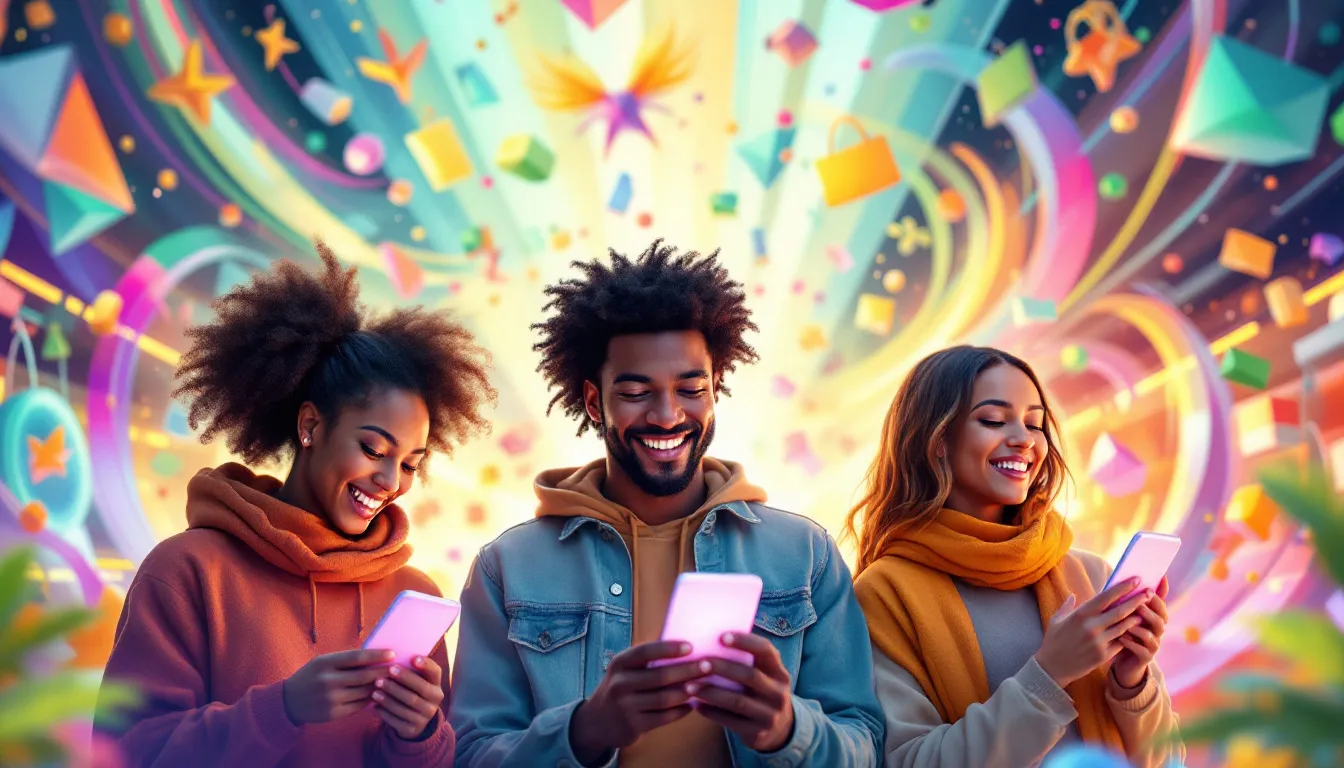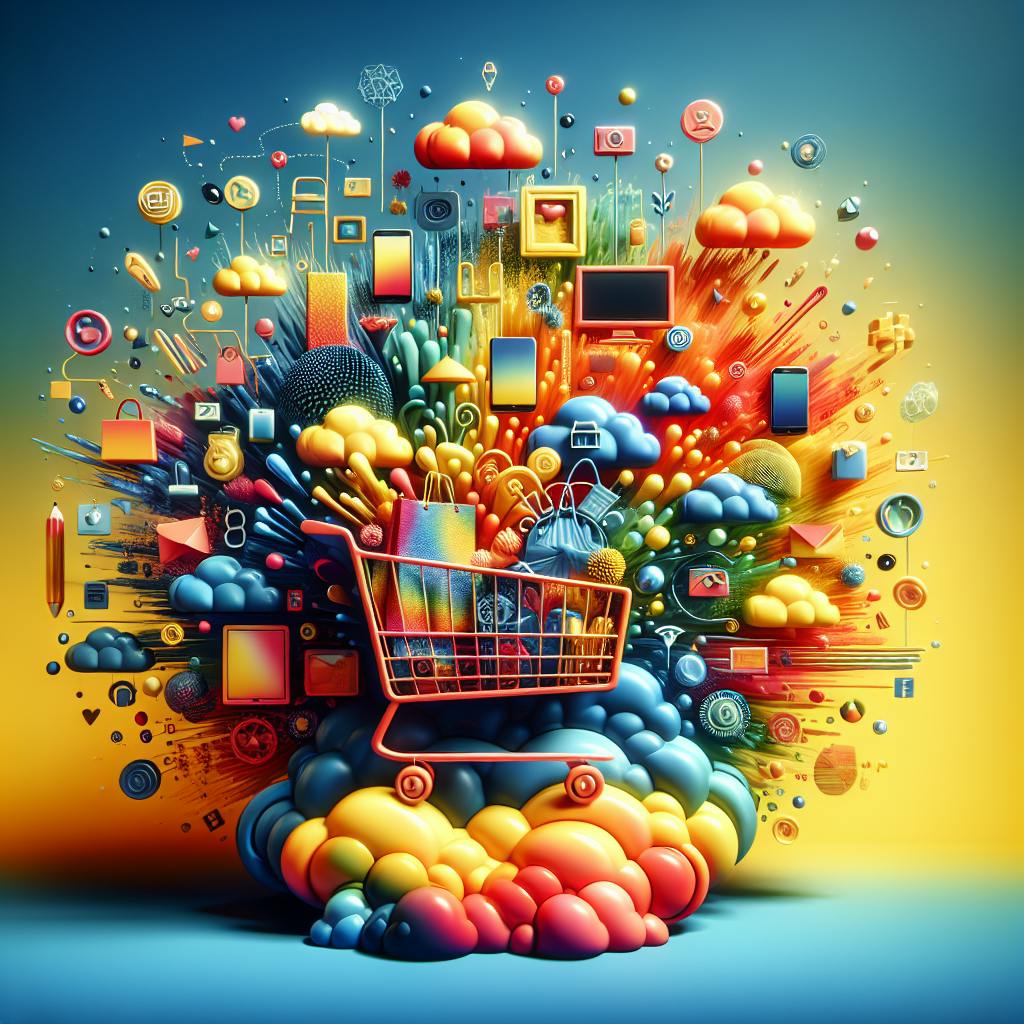E-commerce personalization tailors online shopping experiences to individual customers. Here's what you need to know:
- Personalization uses customer data to customize product recommendations, content, and offers
- It boosts sales, customer loyalty, and average order values
- Key tactics include personalized product suggestions, targeted emails, and customized homepages
- Challenges include data privacy concerns and technology integration issues
Quick comparison of personalization benefits:
| Metric | Impact |
|---|---|
| Revenue growth | 6-10% faster |
| Retail revenue | 10-30% increase |
| Email transactions | 6x higher |
| Purchase likelihood | 80% higher |
To implement personalization:
- Collect relevant customer data ethically
- Use AI and analytics to segment customers and predict preferences
- Customize website content, product recommendations, and marketing messages
- Test different approaches and continuously improve based on results
The future of e-commerce personalization includes hyper-personalization, more AI integration, and a stronger focus on data privacy. Companies that balance personalization with customer trust will gain a competitive edge.
Basics of e-commerce personalization
E-commerce personalization uses customer data to tailor shopping experiences. Here's what you need to know:
Main parts of personalization
- Customer data collection
- Data analysis and segmentation
- Personalization algorithms
- Content and product recommendations
- Customized messaging and offers
These work together to create a shopping experience that feels made just for you.
Upsides for businesses and shoppers
Personalization isn't just good for companies - it helps customers too:
| Businesses get | Shoppers get |
|---|---|
| Higher conversion rates | Better product suggestions |
| Bigger average orders | Faster shopping |
| Loyal customers | Personal offers and discounts |
| Better marketing ROI | Easier product discovery |
Take Reebok: They saw 4% more revenue per session during Black Friday 2020 by personalizing home page carousels and product pages.
Common problems to solve
Personalization isn't all smooth sailing. Here are some bumps in the road:
1. Data privacy worries
People get nervous about their data. Companies need to be upfront about what they collect and follow the rules.
2. Tech headaches
Mixing different systems can be a pain. You need a plan to make data flow smoothly.
3. Keeping it fresh
What people like changes fast. You've got to keep your data up-to-date.
4. Making content that matters
It's tough to make enough personalized stuff. Focus on quality content that actually helps customers.
5. Robots vs humans
AI is great, but don't forget the human touch in customer service.
Want to tackle these issues? Start small. Maybe try personalizing one channel first, then grow from there. You'll learn as you go.
Customer journey in online shopping
The online shopping journey isn't a straight line. It's more like a winding path with several stops. Let's break it down:
Steps in the shopping journey
-
Awareness: Your brand pops up on their radar. Maybe through a social media ad or a friend's recommendation.
-
Consideration: They're checking you out. Looking at products, reading reviews, comparing prices.
-
Purchase: The big moment! They've decided to buy and are going through checkout.
-
Service: Post-purchase support. Order help, questions, etc.
-
Loyalty: Happy customers come back. They might even spread the word.
Adding personal touches
Personalization can spice up each step:
| Journey Step | Personalization Ideas |
|---|---|
| Awareness | Ads based on browsing history |
| Consideration | Product recommendations from past buys |
| Purchase | Custom discounts at checkout |
| Service | Personalized order updates and support |
| Loyalty | Tailored rewards and exclusive offers |
"We create customer personas and journey maps to understand our customers' needs, pain points, motivations, and goals at each stage. This helps us create personalized and relevant content, offers, and interactions that match their expectations and preferences." - Kate Ross, Irresistible Me
Creating a customer journey map
Think of it as a roadmap of your customer's experience. Here's how to make one:
-
Pick a goal: What do you want to learn?
-
Create a customer persona: Who's your typical shopper?
-
List touchpoints: Where do customers interact with your brand?
-
Note pain points: What frustrates your customers?
-
Take action: Use your findings to improve.
-
Measure results: Keep an eye on your numbers.
"We primarily use Triple Whale to gather in-depth insights about our customer behavior and purchasing patterns. Complementing this, Google Analytics lets us understand traffic sources, time spent on our site, and other key metrics." - Erin LaCkore, LaCkore Couture
Using data for personalization
E-commerce personalization needs customer data. Here's how to gather and use it while keeping customers' trust.
Types of customer info to gather
To personalize well, you need different kinds of customer data:
| Data Type | Examples |
|---|---|
| Demographic | Age, gender, location |
| Psychographic | Values, interests, lifestyle |
| Behavioral | Browsing history, purchase patterns |
| Transactional | Order amounts, frequency |
Each type helps you understand your customers better, so you can personalize more effectively.
Ways to study customer data
Got data? Great. Now what? Here's how to make sense of it:
- Group similar customers together
- Guess future behavior based on past actions
- Try different approaches to see what works best
These methods turn raw data into useful insights for personalization.
Keeping data safe and legal
Data is powerful. But with power comes responsibility. Here's how to handle customer info right:
1. Follow the rules (like GDPR and CCPA)
2. Be clear about what you collect and why
3. Let customers choose what to share
4. Keep that data locked up tight
"Customers are cautious about sharing personal data. Respect their privacy and follow the rules." - Lauren Saalmuller, Content Marketing Lead
Remember: Trust is hard to earn and easy to lose. Handle data with care.
Tools for personalization
E-commerce personalization uses smart tech to tailor shopping experiences. Here are the key tools:
Customer data platforms
CDPs are like super-powered address books for shoppers. They combine all customer info into one place, tracking:
- Opened emails
- Clicked links
- Sent texts
- Purchased products
This helps stores understand and communicate with customers better.
| CDP Feature | Benefit |
|---|---|
| Data unification | Complete customer picture |
| Advanced analytics | Spot trends and opportunities |
| Omnichannel tools | Reach customers anywhere |
Personal recommendation systems
These tools suggest products based on customer behavior. They're behind those "You might also like", "Frequently Bought" and other similar sections.
PureClarity provides product recommendations that adapt to each visitor on every click. Relevant recommendations lead to higher engagement and more purchases.
Adding personal touches at different points
Let's look at how to make e-commerce feel more personal:
Making websites feel personal
Tailor your website to each user:
- Change headlines based on who's visiting (SumUp does this)
- Show different buttons for customers vs non-customers (Sezzle's approach)
- Use images that match the visitor's industry (SumUp's strategy)
| Element | Example |
|---|---|
| Menu | Sezzle reorders items based on what you like |
| Testimonials | Spendesk shows reviews from your industry |
| Products | N26 suggests stuff that fits your needs |
Personal email marketing
Make emails that speak to each customer:
- Group people based on what they buy and do
- Set up emails for abandoned carts
- Suggest products based on what people like
OpenTable does this well. They ask you to review your last restaurant visit, which helps you find new places you might enjoy.
Personalizing mobile apps
Make apps fit each user:
Personal social media interactions
Make social media work for sales:
- Show ads based on what people do on your site
- Use quizzes to learn what people like
Spotify's Year in Review is a great example. It creates posts about your listening habits that you can share, which gets people talking about Spotify.
Advanced ways to personalize
E-commerce personalization is getting smarter. Here's how:
Guessing what customers want
AI now predicts customer needs before they ask. It looks at past behavior to suggest products. For example:
- Amazon's "Inspired by your shopping trends"
- Netflix's content recommendations (saves them $1 billion yearly)
Changing content as customers shop
Websites adjust in real-time based on what you do:
| You do this | Website does this |
|---|---|
| Browse beach books | Show tropical vacation ads |
| Read about savings accounts | Display other financial products |
| Linger on a product page | Offer a quick discount |
Consistent personal experiences everywhere
Customers want the same experience on all platforms:
- Same preferences on website, app, and in-store
- Remembering cart contents across devices
- Consistent product recommendations everywhere
Voice and image search personalization
New search tech makes shopping easier:
- Voice assistants suggest products
- Image tools find items similar to your photos
These methods work. McKinsey says personalization can boost sales by up to 40%.
"The AI revolution is not just about technology. It's about how you apply it to the problems you want to solve." - Satya Nadella, CEO of Microsoft
To use these strategies:
- Collect customer data (ethically)
- Use AI to predict preferences
- Test different approaches
- Keep improving based on results
Checking if personalization works
Want to know if your e-commerce personalization is actually doing anything? Here's how to find out:
Key metrics to watch
Keep an eye on these numbers:
| Metric | What it tells you | How to figure it out |
|---|---|---|
| Conversion rate | Are people buying more? | (Sales / Visitors) x 100 |
| Average Order Value (AOV) | Are they spending more? | Total revenue / Number of orders |
| Revenue Per Visitor (RPV) | Are you making more money overall? | Total revenue / Total visitors |
| Customer Retention Rate | Are they coming back? | (End customers / Start customers) x 100 |
Test, test, test
A/B testing is your best friend here:
- Try different things for different groups
- Compare personalized stuff to generic
- Play around with your homepage
Check out what Chime did: They tested 54 homepage versions with personalization. Result? 8% more new customers. Then they went big with 216 versions. Boom - 79% increase compared to their control.
Keep improving
Don't stop at one good result:
- Check your numbers regularly
- Look for patterns
- Update based on what you learn
- Tell everyone what's working
"Large-scale testing is not a technical thing; it's a cultural thing that you need to fully embrace." - David Vismans, former Chief Product Officer of booking.com
What's next for e-commerce personalization
E-commerce personalization is about to level up. Here's what's coming:
New tech on the horizon
-
Blockchain: Makes supply chains transparent. You'll know exactly where your stuff comes from.
-
Smarter AI: Predicts what you want before you do. Amazon's already doing this.
-
AR for virtual try-ons: "Try" clothes at home. Ikea's app lets you see furniture in your room.
What customers will want
Shoppers won't settle for basic personalization. They'll expect:
1. Hyper-personalization
Not just product recommendations, but custom prices, tailored ads, personalized emails, and AI chatbots that get your style.
2. Privacy-first approach
People are wary about their data:
- 40% don't trust businesses with their info (KPMG)
- 57% struggle to protect online privacy (Statista)
Companies need to step up their data game.
3. Seamless experiences
Customers want the same personalized treatment on websites, apps, and in physical stores.
How online shopping might change
-
AI takeover: By 2025, 80% of customer service will use AI (Gartner). Faster, smarter help for shoppers.
-
Voice shopping gets personal: Expect more "Hey Alexa, order my usual groceries."
-
Social shopping boom: Instagram and TikTok will blend social media and shopping even more.
-
Subscription 2.0: Super tailored subscriptions are coming. Denis Sinelnikov, CEO of Media Components, says:
"In 2024, I expect retailers will offer subscriptions tailored to individual preferences, not only in terms of product selection but also in the frequency and timing of deliveries."
The future of e-commerce? Every shopper feels like the store was built just for them. Companies that nail this personal touch will win big.
Tips for good e-commerce personalization
Making a personalization plan
To nail personalization, you need a game plan:
-
Set clear goals: What's your endgame? More sales? Loyal customers? Better engagement?
-
Pick your spots: Where will personalization pack the biggest punch? Focus on key customer touchpoints.
-
Gather the right data: What customer info will you use? Think purchase history, browsing behavior, location, and demographics.
-
Choose your tools: What tech will power your personalization? AI platforms? Customer data tools?
-
Start small, then scale: Begin with one or two efforts. Learn, then expand.
Building your personalization team
Personalization isn't a solo gig. You need a squad:
- Data analysts to crunch numbers
- Marketers to craft personalized messages
- IT pros to manage the tech
- Customer service reps for the human touch
- UX designers for smooth, personalized experiences
Pro tip: Keep your team tight-knit. Good communication is key.
Mixing tech with human help
Blend smart tech with a human touch:
- Let AI handle data analysis and product recommendations
- Keep humans in the loop for content review and complex issues
- Let customers choose their level of personalization
Philips nailed this balance. They used AI-powered personalization but kept human customer service. The result? A 40.11% boost in conversion rates and a 35% jump in average order value.
Quick wins for e-commerce personalization
Want to start personalizing now? Try these:
- Show product recommendations based on browsing history
- Use geotargeting for relevant deals
- Send personalized abandoned cart reminders
- Create custom landing pages for different customer segments
- Tailor email content based on customer behavior
Skates.co.uk used personalized cart abandonment reminders with geolocation targeting. This simple move brought in an extra £2000 per day during the holidays.
Solving personalization problems
Tech problems
E-commerce personalization often hits tech roadblocks. Many businesses can't connect their data systems, leaving customer profiles incomplete.
Here's how to fix it:
- Use customer engagement platforms to gather and analyze data
- Set up data pipelines for smooth info flow
- Go for cloud-based solutions to handle big datasets
"Data quality is one of the primary challenges to effective personalization." - Marketing Sherpa
Getting everyone on board
Personalization isn't just IT's job. You need all departments on board.
To get team buy-in:
- Show each department how personalization helps them
- Train staff on new tools
- Create cross-functional personalization teams
Doing the right thing
Using customer data is a big responsibility. Here's how to personalize ethically:
| Do's | Don'ts |
|---|---|
| Be clear about data collection | Collect unnecessary data |
| Let customers control their data | Misuse data |
| Keep data secure and current | Ignore privacy laws |
Here's the kicker: 79% of consumers worry about how companies use their data. Trust is key.
"Upholding privacy means limiting data collection, focusing on what's essential for user experience, and deleting data when consumers ask."
Real examples
Success stories
American Airlines crushed it with personalization. They used Next Generation Video for AAdvantage Aviator Red World Elite Mastercard members. The result? 5x better retention. That's huge in the airline world.
Walgreens nailed it too. They focused on four key areas: store entry, navigation, checkout, and prescription pickup. For prescriptions, they added in-store kiosks. Customers check in, an algorithm sorts their needs, and data zips to the pharmacy. By checkout time, it's all personalized.
A big international airline took it up a notch. They use loyalty program data to greet frequent fliers by name. Flight attendants even offer special deals to loyal customers in economy. Smart move to show they care.
Learning from mistakes
Not all personalization efforts soar. Some crash hard. Here's the lowdown:
1. Jack In The Box's name fail
Jack In The Box sent a birthday email with "Hi {{firstname}}". Yikes. This placeholder error left customers feeling like just another number.
2. Amazon's baby blunder
Amazon sent baby registry emails to women struggling with infertility. Talk about a sensitive data disaster.
3. Pinterest's premature congrats
Pinterest congratulated single women on tying the knot. Cue the social media storm. Double-check your data, folks.
4. Shutterfly's phantom babies
Shutterfly congratulated women on babies they didn't have. Awkward. Keep that customer info up-to-date.
| Company | Oops | Lesson |
|---|---|---|
| Jack In The Box | Placeholder fail | Test before sending |
| Amazon | Baby emails to wrong crowd | Handle sensitive data carefully |
| Fake wedding congrats | Verify your data | |
| Shutterfly | Non-existent baby congrats | Update customer info |
These examples show personalization's double-edged sword. Done right, it's a game-changer. Done wrong, it's a customer repellent.
"Nail personalization, win lifelong customers. Mess it up, lose subscribers fast." - Campaign Monitor
The bottom line? Test, verify, and think hard before hitting send on personalized content.
Wrap-up
E-commerce personalization isn't optional anymore. It's a must. Here's why:
1. Customers expect it
73% of shoppers want personalized experiences. If you're not doing it, you're behind.
2. It boosts business
| Metric | Personalization Impact |
|---|---|
| Revenue growth | 6-10% faster |
| Retail revenue | 10-30% increase |
| Email transactions | 6x higher |
| Purchase likelihood | 80% higher |
3. Everyone's doing it
89% of digital businesses are investing in personalization. Amazon, Walmart, and Sephora are leading the pack.
4. It's about loyalty, not just sales
Take Starbucks. Their personalized rewards program drives 55% of their revenue.
But here's the kicker: 92% of brands offer personalization, yet 61% of consumers still feel like a number. The solution? Do it right.
Focus on:
- Building trust (71% of consumers trust brands that explain data usage)
- Going omnichannel (88% say experience is as important as the product)
- Using AI smartly (like Burger King's AI-generated ads)
- Thinking beyond products (Misfits Market predicts and pre-fills carts)
What's next? Expect:
- Hyper-personalization
- More AI
- Predictive personalization
- Privacy-first approaches
The takeaway? Personalization in e-commerce is about creating unique journeys that keep customers coming back. The winners will be those who nail the balance of personalization, privacy, and seamless experiences.
FAQs
How can e-commerce businesses use personalization to improve the customer experience?
E-commerce personalization can boost customer experience and drive sales. Here's how:
1. Personalized recommendations
Use AI to suggest products based on browsing history and past purchases. This can guide customers from browsing to buying.
Sephora's Beauty Insider Rewards program is a great example. Their personalized recommendations help 11 million members spend 15 times more on Sephora.com than the average user.
2. Cart abandonment recovery
Send personalized emails when customers leave items in their cart. It's like a friendly reminder that can win back sales.
3. Time-limited offers
Create a sense of urgency with personalized, time-sensitive deals. It's like saying, "Hey, this deal won't last forever!"
4. Customized homepages
Tailor homepage content based on the shopper's location and browsing history. It's like rolling out the red carpet for each visitor.
5. Personalized email campaigns
Target email marketing based on customer segments and behaviors. It's not just spamming - it's sending the right message to the right person.
Here's the kicker:
| Metric | Impact of Personalization |
|---|---|
| Purchase likelihood | 80% increase |
| Impulse purchases | 49% of customers |
| Sales increase | 20% average |
| Repeat buyers | 60% more likely |
These numbers show that personalization isn't just nice to have - it's a game-changer for e-commerce businesses.





